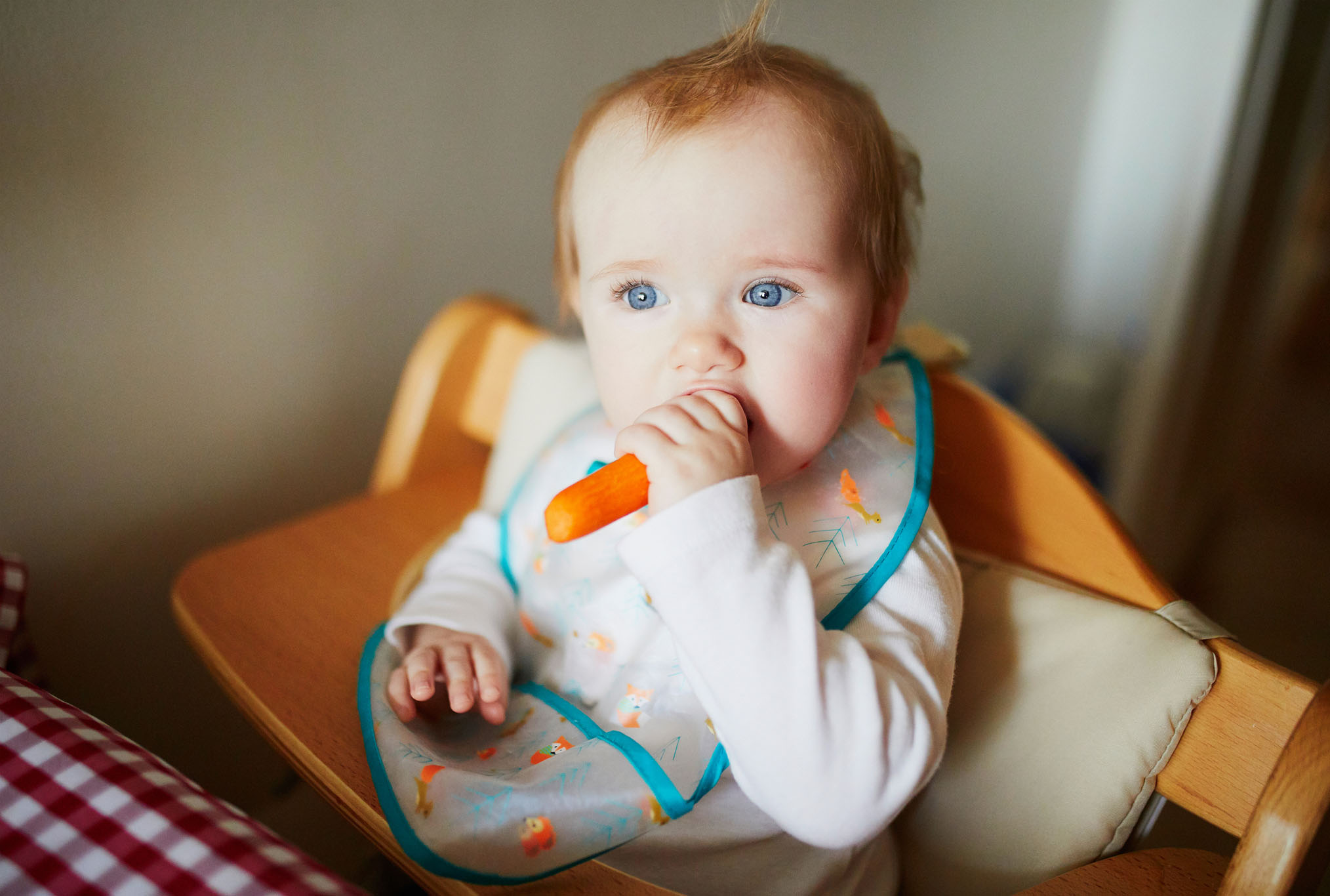Starting Solids: Helping Your Baby Learn to Self-Feed
Reading time:
Reading time:

By: Leah Hackney, RD, LD, CSP
Starting solids is an exciting milestone, but for many parents, it can also feel overwhelming. You may be wondering: How do I know my baby is ready? Should I spoon-feed or try baby-led weaning (BLW)? What if my baby chokes? These concerns are entirely normal. As a pediatric dietitian, I want to reassure you that self-feeding is a gradual process, and your baby is built to learn. In this article, I’ll discuss transitioning to solids, support self-feeding skills, and provide suggestions that are both nutritious and developmentally appropriate.
Introducing Solids
Transitioning from breastmilk or formula to solid foods is a significant change for both you and your baby. The American Academy of Pediatrics (AAP) recommends introducing solids around 6 months of age when babies show signs of readiness, such as good head control, sitting with minimal support, and showing interest in food (AAP, 2022).
Spoon-Feeding vs. Baby-Led Weaning (BLW)
There are two main approaches to introducing solids:
Independent Self-Feeding
Teaching babies to self-feed is about more than just eating—it’s a critical part of their motor development. Around 6-7 months, babies begin using their palmar grasp (whole-hand grip) to pick up larger pieces of food, and by 9-12 months, they refine their pincer grasp (thumb and forefinger) to pick up smaller pieces (Cameron et al., 2015). More on this in the article Playing with Food Benefits: Developing Fine & Gross Motor Skills.
How to Teach Your Baby to Self-Feed
Choking vs. Gagging
Parents often worry about choking when offering finger foods. But note that current research indicates there’s not an increased risk for offering safe finger foods versus purees (BLISS, 2015).
The most important thing is that parents know the difference between what gagging looks and sounds like versus choking and what to do in a choking event.
Gagging is a normal part of learning to eat. Gagging is a protective reflex and looks like coughing or making noises while food is pushed forward. Choking, however, is often silent, as food blocks the airway. To keep mealtimes safe:
Best First Foods for Self-Feeding
Providing a variety of safe, nutritious foods helps babies develop a positive relationship with eating. Here are some ideal first finger foods so you can let your baby practice their self-feeding skills:
For palmar grasp (6-7 months):
For pincer grasp (9-12 months):
Nurturing Healthy & Positive Eating Habits
As parents, our role is to create a positive, pressure-free eating environment. Focus on offering a variety of textures and flavours, allowing your baby to explore at their own pace. Some key reminders to support self-feeding:
Introducing solids and self-feeding is a journey, not a race. Some days, your baby may eat enthusiastically; other days, they may refuse food altogether. This is normal! Keep mealtimes relaxed, provide safe foods for practice, and trust that your baby is learning at their own pace. If you have concerns about feeding, talk to your pediatrician or a pediatric dietitian.
References